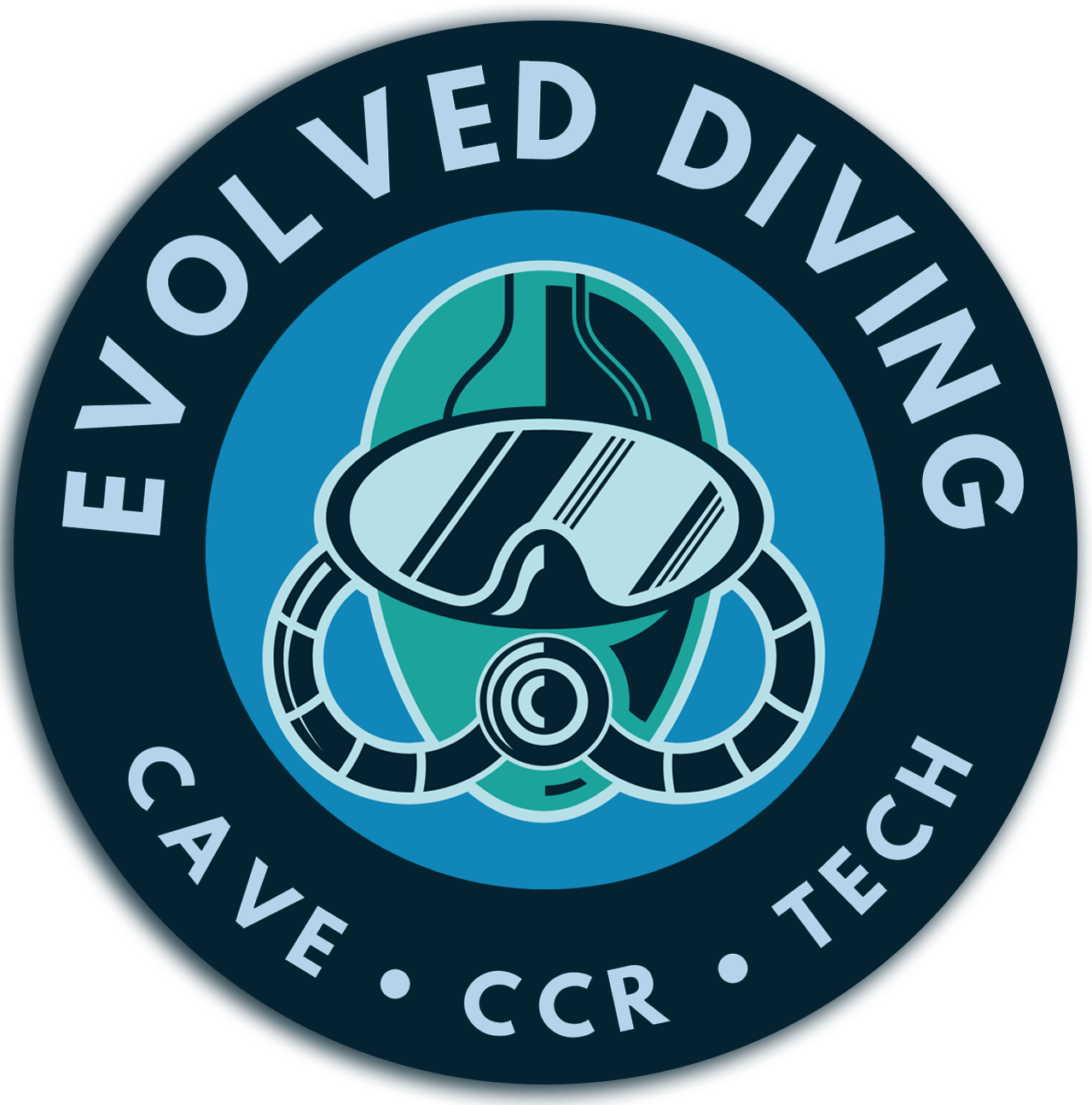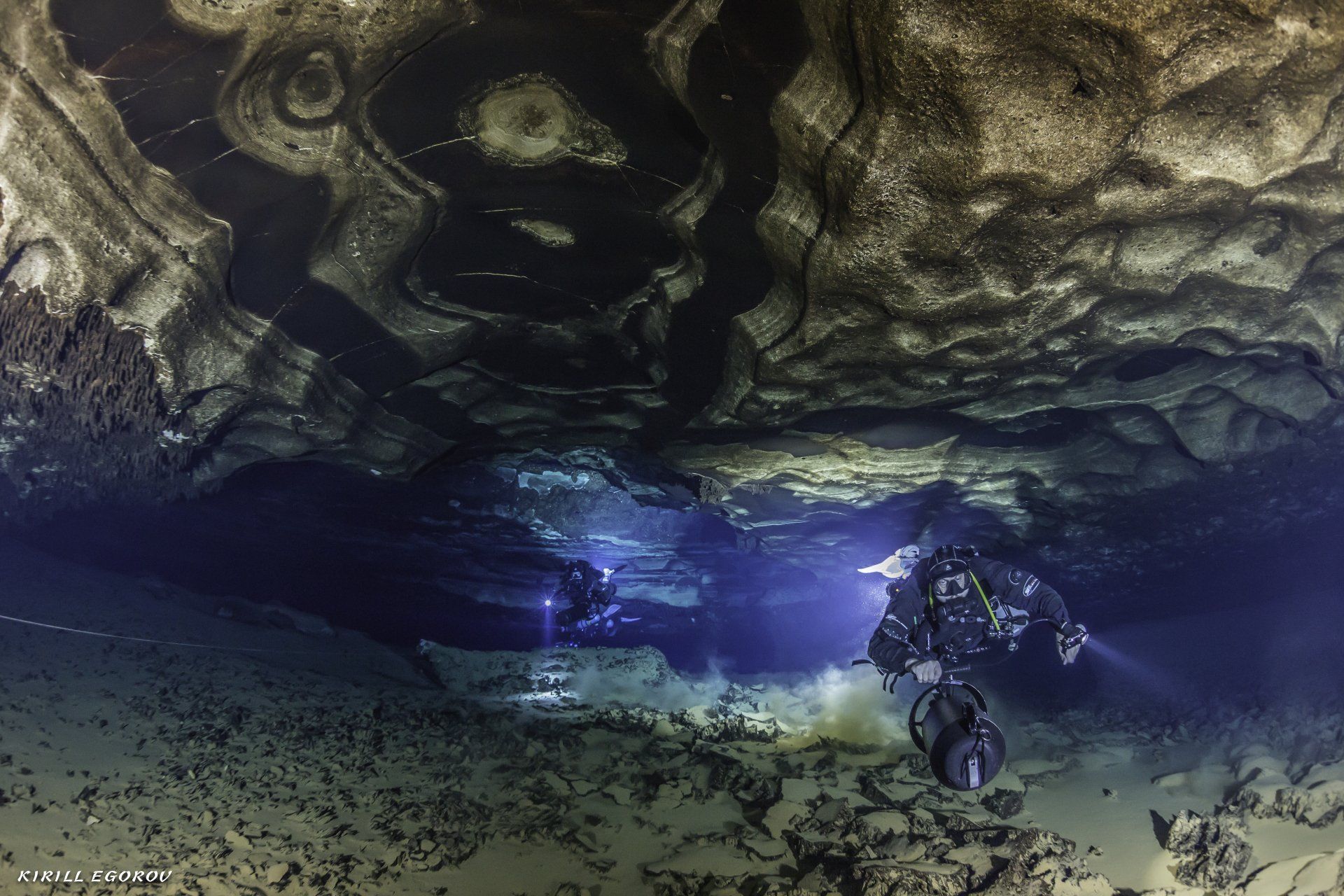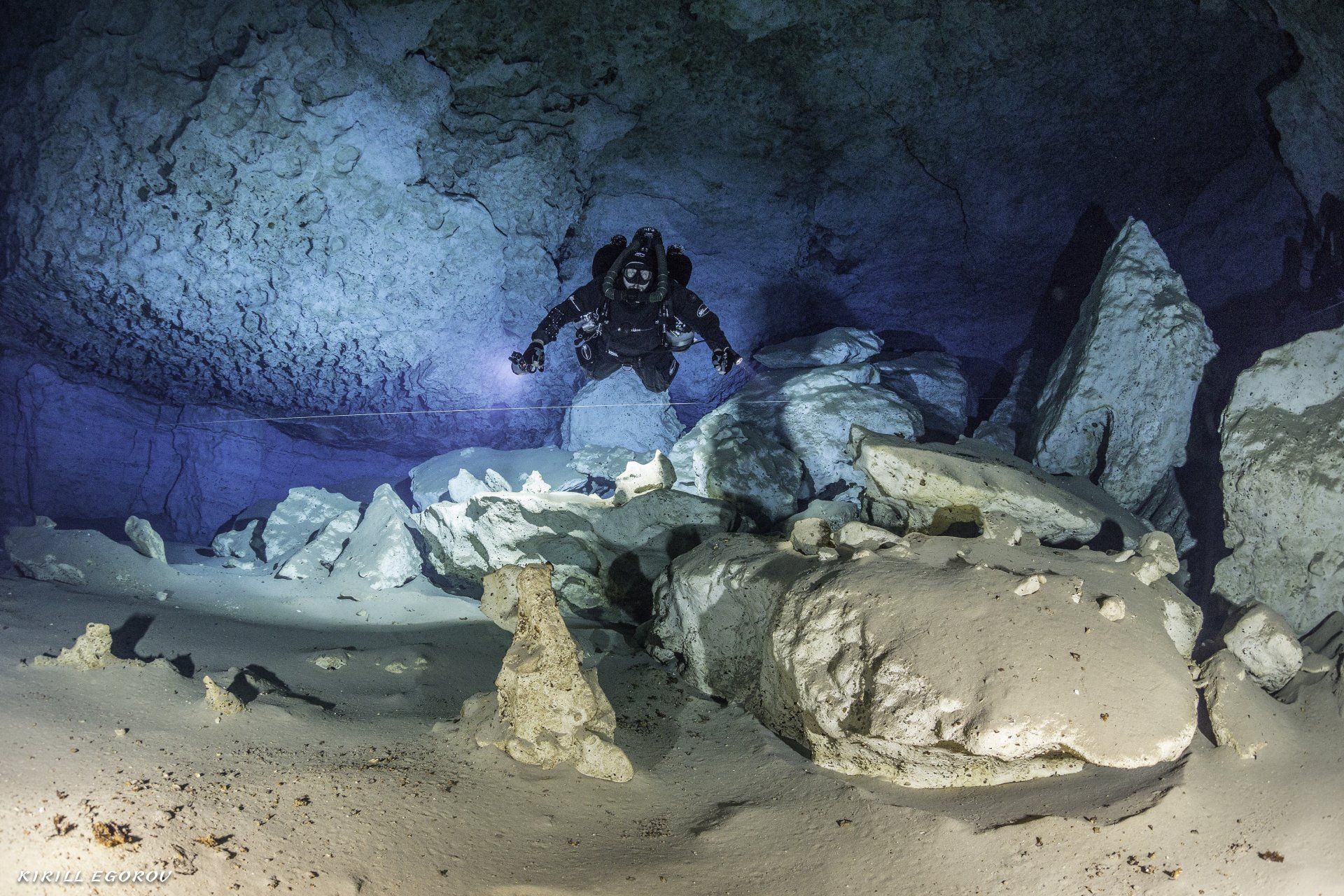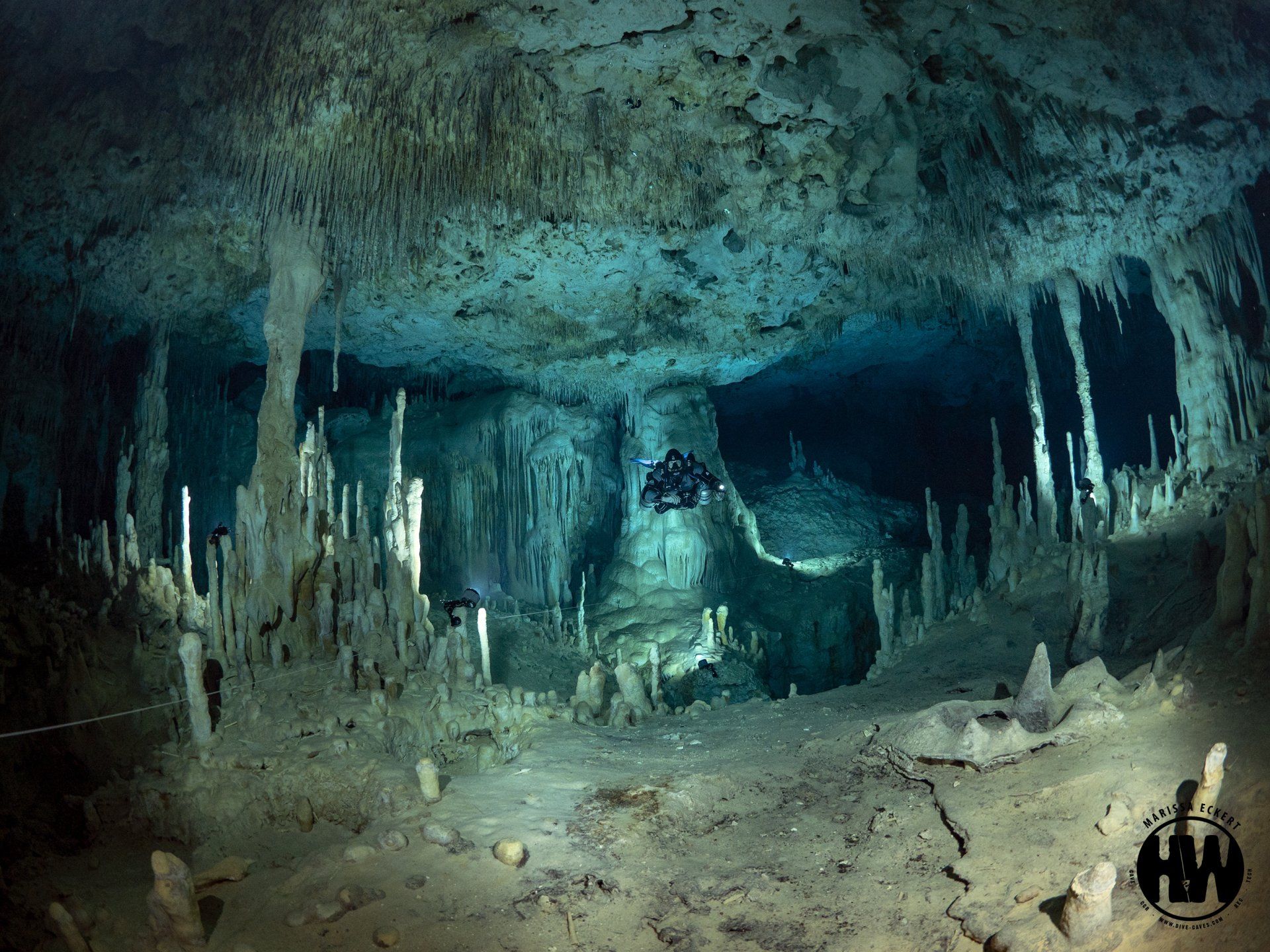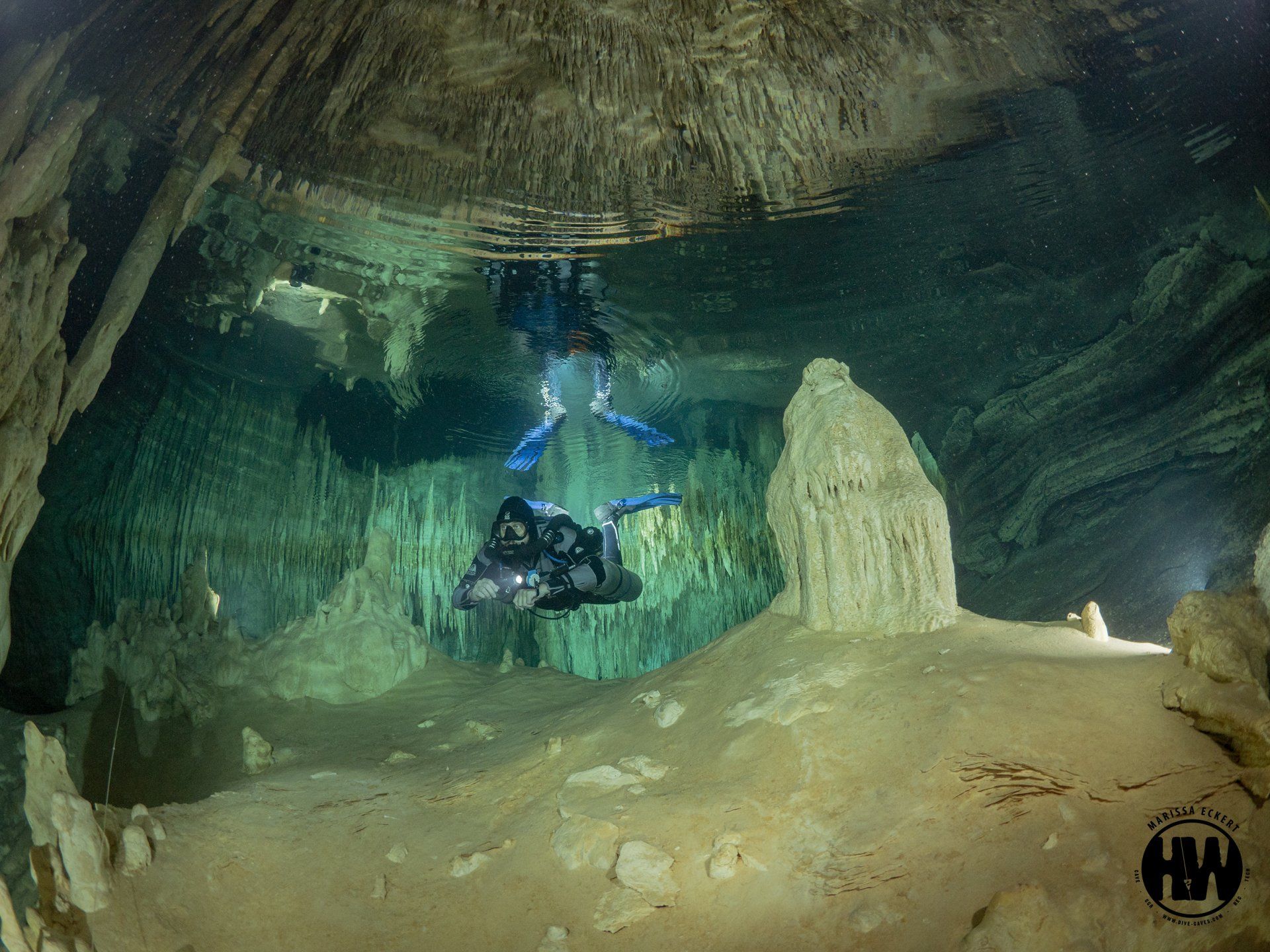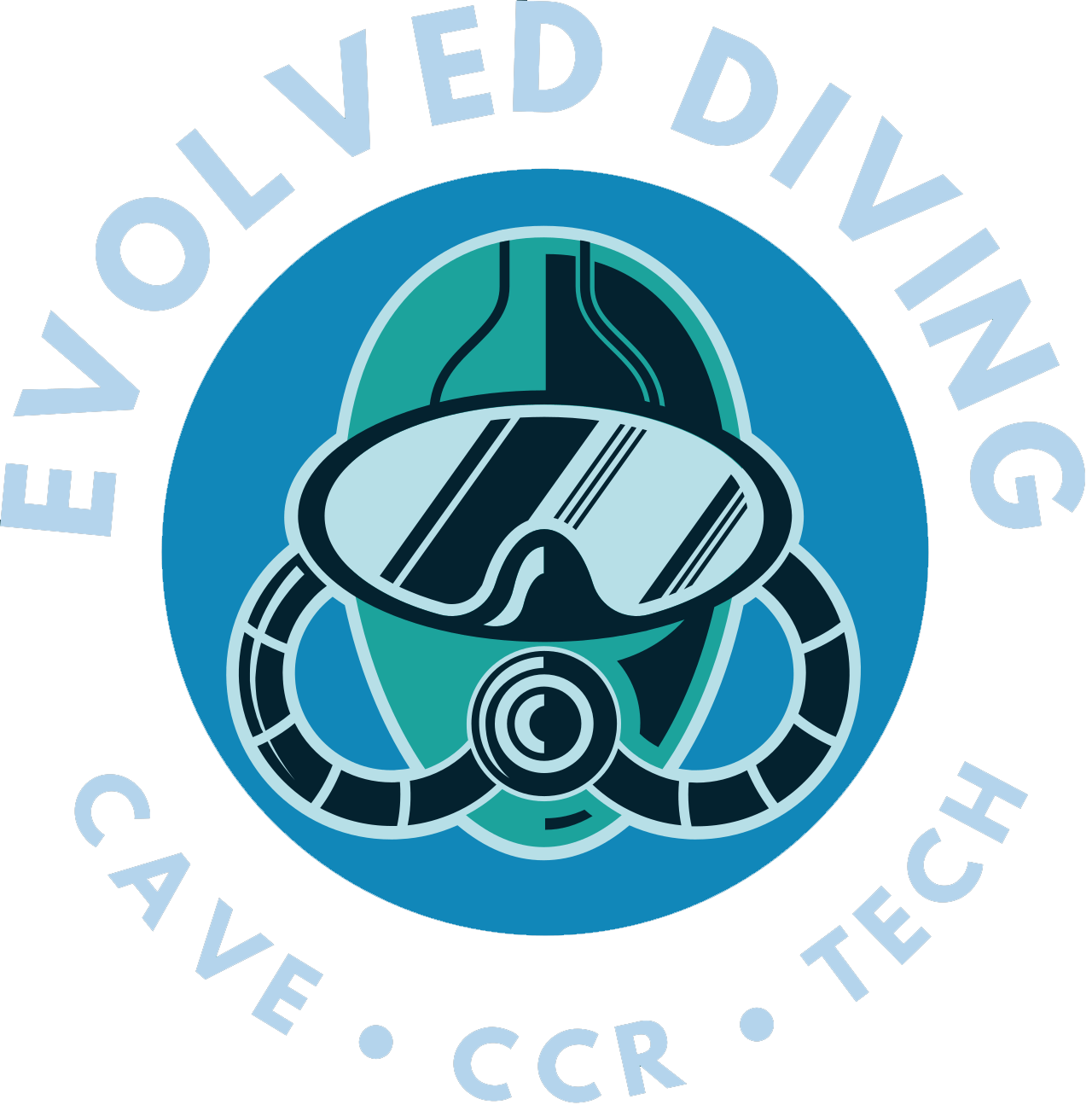Sidemount
Sidemount was born out of necessity in caves. Tight restrictions and remote locations that made backmounted doubles impractical or impossible meant a new approach needed to be taken. These tight areas add significant complexity to the dive, not only due to the struggle to physically fit through the restrictions, but also because:
- Equipment failures are more likely due to the harsh environment
- Equipment failures and gas loss become a much more serious risk due to the difficulty exiting the cave quickly
- Self-sufficiency is paramount, as it is unlikely that a teammate will be able to reach you if you have a problem
Sidemount configuration training and experience will help you gain confidence and leave you well-prepared for any technical training that you may want to do in the future. And it may be just the thing that convinces you to try technical diving after all.
Who this course is for
✔ The diver looking to expand their in-water skills and techniques
✔ The certified diver who has interest in moving forward with technical diving education and expanding their equipment configuration options
What you can expect to learn
The Sidemount Diver Course takes an in-depth look at all of the following and more!
- Gas matching procedures to include dissimilar volumes
- Gas management utilizing independent cylinders
- Psychological considerations of technical diving
- Equipment considerations including: Cylinder options, Regulator options, Buoyancy compensator/harness options, Proper weighting, Equipment configurations
- Communication (light and hand signals)
- Problem solving in a sidemount configuration
- Diving in tight or confined spaces
- Conservation
- Water entries/exits
- S-drills specific to sidemount diving
Some of the required skills you will have to demonstrate include
- Demonstrate various propulsion techniques such as the frog kick, modified frog kick, modified flutter kick, backwards kick, helicopter turns, and hand pulling if appropriate for the environment.
- Demonstrate adequate buoyancy control; ability to hover at a fixed position in water column without moving hands or feet
- Demonstrate adequate trim; ability to maintain proper position during the descent, bottom, and ascent portion of the dive
- Demonstrate the ability to perform the following exercises while maintaining trim and buoyancy in the water column: Unclipping and attaching sidemount cylinders, Perform gas switches with and without a mask
- Demonstrate the ability to safely manage gas in independent cylinders
- Demonstrate conservation, awareness, and back referencing techniques
- Deploy a lift bag
What’s in it for you?
Upon successful completion of this course, graduates may engage in sidemount diving activities without direct supervision so long as the following limits are adhered to:
✔ The diving activities approximate those of training
✔ The areas of activities approximate those of training
✔ Planned dives do not exceed diver’s current certification level
